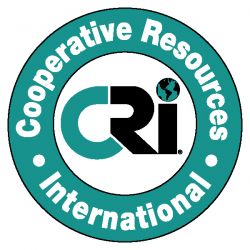Connecting Soil Health and Iowa’s Nutrient Reduction Strategy |
|
Figure 1: Phosphorus Fixation Graph |
|
This item has been supplied by a forage marketer and has not been edited, verified or endorsed by Hay & Forage Grower.
Concerned about reducing nutrient runoff? Addressing the health of your soil and changing a few land management practices can often have a substantial impact. Iowa farmers are being asked to significantly reduce the amount of nitrogen and phosphorus runoff from their fields, and some experts say the solution isn’t really all that complicated. “Soil health and nutrient loss are very closely connected,” states Jim Friedericks, AgSource Laboratories’ Outreach and Education Advisor. “If you’re managing for one, you’re basically managing the other. By improving soil health you will also reduce nutrient losses. The benefits of nutrient loss reduction practices extend to helping improve overall soil health.” The Iowa Nutrient Reduction Strategy exists to assess and reduce nutrient runoff to Iowa waters and the Gulf of Mexico in a scientific, reasonable and cost effective manner. There is a dead zone in the Gulf of Mexico consisting of thousands of square miles where oxygen levels are too low to support marine life. Each of the 12 states along the Mississippi River is developing its own nutrient reduction strategy. In Iowa, the Department of Agriculture and Land Stewardship, the Iowa Department of Natural Resources, and the Iowa State University College of Agriculture and Life Sciences worked together to create this plan. Agricultural land use accounts for most of the nutrient runoff into watersheds. According to the Iowa Nutrient Reduction Strategy the requirements for Iowa’s farmland are reductions of 41% for N and 29% for P losses. “If we are to reach our overall reduction goal of 45% less total nitrogen and total phosphorus loss, we need to focus on best practices for applying fertilizer, reducing tillage and additional use of cover crops,” said Friedericks. He noted that “the combination of reducing tillage and increasing cover cropping will achieve most of the required reductions being asked of Iowa farmers. These two practices have the biggest impact on soil health.” Soil health is all about microbes. The growth of the microbial life in soil is regulated by the balance between nitrogen and carbon. Microbes use N when there is an excess of available carbon, and release N when carbon is limiting. This released nitrogen can leave the field as a gas or as nitrate leaching to ground water or in tile drainage. Carbon in this balance comes from decomposing plant residues and actively growing plant roots. Nitrogen inputs are applied as fertilizer or through biological nitrogen fixation and recycling. Adding biomass through cover cropping causes a boost in carbon from the plant roots or residue. This boost stimulates microbial growth and in turn retains nitrogen in the system. Reducing tillage or no-till works to actually slow down the rate of carbon use in the soil but results in an accumulation of more stable forms of organic matter as plant residues decompose over a longer period. Increasing this organic matter improves the physical characteristics of soil such as aeration, water infiltration and water supply while reducing erosion and runoff. “It is this microbial life that is central to the concept of soil health and that plays a significant part in the ability of the soil to retain nutrients,” said Friedericks. “As a living component of the soil, it’s something that can be managed or enhanced, along with other factors, for maximum benefit.” Phosphorus added to the soil as fertilizer (or mineralized from crop residue) is mostly bound to the mineral soil particles, and only about 25% is available for crop uptake. See Figure 1. This means that the high P levels in our rivers comes from soil eroded from fields and carried along with this sediment in the water. Controlling erosion through reduced tillage, cover cropping or with terraces and buffer strips saves topsoil and controls loss of P from farm fields.
 Figure 1: Phosphorus Fixation Graph Managing fertilizer rates and timing along the 4R principles – applying the Right fertilizer source and the Right rate and the Right time and in the Right place - has the potential of reducing nutrient losses. Phosphorus applied at the right amount, as indicated by to soil testing, or using liquid manure can cut losses by as much as 46%. See Figure 2. Other practices suggested under the Reduction Strategy also have impact. Changes to land use practices such as extended rotations and converting cropland to pasture or set aside land can achieve 75% to 85% reduction of P and N losses, respectively. This too will impact soil health because the land is tilled less often, the soil surface is protected from erosion and the plants growing on the soil for more days in a year will maintain larger microbial populations in the soil. When planning for the upcoming crop year, consider practices that will benefit the health of your soil while helping to meet the nutrient loss reduction strategy of the state. Test the soil to determine the appropriate amount of fertilizer to apply. Consider fertilizer timing and tillage operations that will protect the soil and the nutrients, making them available to the crop when required. Evaluate the condition of the soil to see if adding a cover crop or changing a rotation might enhance the quality of this all important resource.  Figure 2: Estimated Nutrient Loss Reductions*
 To view more technical bulletins about nitrogen and phosphorus recommendations, visit http://agronomy.agsource.com and click on ‘Technical Bulletins’.
AgSource is a leader in agricultural and environmental laboratory analysis and information management services. A subsidiary of Cooperative Resources International, AgSource provides services to clients in the United States and across the globe. Learn more at www.AgSource.com. |
